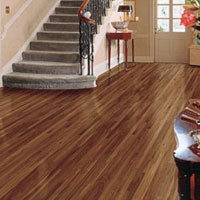Serving Upstate NY—VT—MA • For selections & prices, CALL or EMAIL US
American Black Walnut
Wood Flooring Species
Scientific Name:
Juglans nigra
Other Names and Species:
American Walnut
Black Walnut
Burbank Walnut
Eastern Black Walnut
Eastern Walnut
Gunwood
North American Walnut
Virginia Walnut
It is not to be confused with Endiandra globosa (also called “Black Walnut”), a species of medium-sized Australian rainforest tree.
Origin:
Native to the eastern United States, from southern Minnesota east to Pennsylvania, New Jersey, and New York, and south to the Carolinas, Georgia, Florida, and Alabama. It is also grown in Texas and north through Oklahoma, Kansas, Nebraska, and South Dakota.
Appearance:
There is a distinct difference in color between the nearly white sapwood of walnut and the heartwood, which ranges in color from a deep, rich dark, almost chocolate-brown to a purplish black. The wood often has a purplish cast with dark streaks. However, there is a wide variation of color, figure, and grade within the species. The grain of walnut is mostly straight and open, though some boards may have a grain pattern that is burled or curly. In fact, the wood is especially valued for its wavy, curly, and mottled figures. The wood surface is generally fairly dull, though it may develop a lustrous patina after many years in use.
Properties:
This is one of the most prized of North American hardwoods. Although American black walnut is somewhat softer than northern red oak, the wood is heavy, hard, and stiff and has excellent dimensional stability. It is moderatly dense, but very strong, with good shock resistance. Walnut is one of the most durable of the domestic commercial woods, even under conditions favorable to decay.
Janka Hardness: 1010
Black walnut is nearly seventy-eight percent as hard as red oak, roughly thirty percent softer than sugar maple, about twenty-one percent harder than African mahogany, and about forty-two percent harder than Douglas-fir.
Workability:
The machining qualities of walnut are excellent, but it is also easily worked with hand tools. This wood has a distinctively sweet aroma when worked. It is fairly resistant to splitting and has good holding ability. It sands and finishes beautifully and holds both paint and stain exceptionally well.
Principal Uses:
Frequently used as a highlight material for borders and other inlay techniques, this familiar domestic wood has many commercial applications. It is typically found not only in wood flooring but also veneer, paneling, fixtures, furniture, cabinets, and novelty items. In addition, it is superior to all other woods for gunstocks because of the way it keeps its shape.
Learn more about available grades of
Walnut hardwood flooring »






